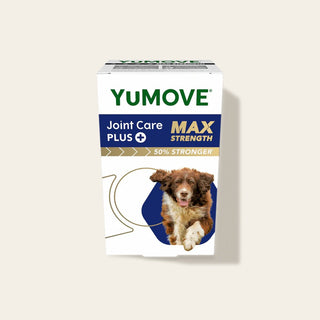

What is catnip and why do cats go crazy for it?
Catnip may be one of the most surefire ways of getting our feline friends into a good mood. In fact, you probably have a few catnip products in your home right now. But do you know what catnip is, and why cats go crazy for it? Read on to find out more about your cat’s favourite plant…
What is catnip?
Catnip – or Nepeta Cataria, to give it its scientific name – is a fragrant plant from the mint family. Although the plant is only indigenous to Europe, Asia, and Africa, today it’s found across the globe, with a whopping 250 species worldwide.

What does catnip look like?
The jagged, heart-shaped leaves of wild catnip are a dull, green colour and sprout blue, white, or pink flowers from spring through autumn. With sturdy stems, these plants tend to grow to two or three feet tall. Whereas shop-bought catnip is dried and crushed, and often resembles certain herbs you’d find in your pantry or the supermarket aisle – like basil or parsley.
What does catnip smell like?
Catnip has a unique sweet and minty smell. That’s because it contains various oils that give it a distinct aroma. Nepetalactone is the oil which cats love. When your cat eats or smells catnip, it’s that same oil that activates their sensory nerves – kind of like a pheromone for cats. Which probably explains their weird behaviour.
Although fresh and wild catnip smells minty, it’s a different story for the dried catnip you find in the shop and in cat toys. The dried version tends to smell more like grass and doesn’t have the same minty undertones.
Why do cats love catnip?
Nobody quite knows why catnip causes such a strange reaction in cats. However, some animal scientists think that its effects occur because the sweet smell of the plant resembles feline pheromones. Other scientists think the ‘magic’ oils in catnip work to protect your feline friend from pests like mosquitoes. In one study,[1] cats who didn’t rub themselves against catnip were more likely to be bothered by these pesky insects.
Catnip may also be a natural mood booster for us humans, too. Catnip tea has become a popular drink for cat parents and non-pet owners alike, as it appears to have a calming effect on the body.
What effect does catnip have on your cat?
It’s different for every cat. But generally, cats are very interested in catnip and will lick it, eat it, or rub their body against it. And it causes a lot of cats to become more laidback than normal. Don’t worry, though; any change in behaviour is short-lived. Your feline will likely go back to normal after roughly 10 minutes or so.

The bad side of catnip
Usually, catnip makes your cat content. In rare cases, some cats can become agitated or slightly aggressive. If this sounds like your kitty, you might want to reduce the frequency or amount they receive.
Why doesn’t my cat like catnip?
Having a reaction to catnip is hereditary. Not every cat carries those genes – similar to how not every person can roll their tongue! Research shows that roughly 30% of domestic cats don’t respond to catnip, instead showing only indifference. Kittens and senior cats might also not respond in the same way to catnip.[2]
A calming alternative
If you’re looking for something else to calm your cat, why not try YuMOVE Calming Care for Cats? It contains natural, scientifically backed ingredients to help cats cope with stress. It’s ideal for cats who don’t like being left alone, are fearful of other cats, strangers, new family members, visits to the vet, new situations and car travel.

Is catnip bad for cats?
The short answer? No, it’s perfectly safe. There's no evidence that catnip is harmful. However, if your cat consumes a large amount of catnip, it can cause some digestive upset. But don’t worry, that’s not very likely.
How often should my cat have catnip?
When it comes to catnip, it’s possible to have too much of a good thing. Although catnip isn’t bad for your cat, they probably shouldn’t be exposed to it more than once a day. If your cat is given catnip too often, they can become less sensitive to it over time.
Fresh catnip vs shop-bought

Dried catnip will definitely have an effect on your cat. But, like most herbs, fresh tends to be best. That’s because fresh catnip contains a rich concentration of Nepetalactone (the active ingredient that relaxes cats). Dried catnip comes second to the fresh stuff. The weakest concentrations of Nepetalactone are found in liquid catnip formulations.
If your cat loves this fragrant plant, then you should consider growing it yourself. Lots of garden centres and plant shops will sell catnip plants. However, it’s important to note that catnip is very invasive – just like mint. So be sure to use a pot or planter to stop it from taking over your entire garden.
Growing catnip at home
As we said above, fresh catnip will have more of an effect on your cat than the dried version. Here are our top tips for growing catnip at home:
- It’s best to plant catnip in spring when the warmer weather starts to kick in. We recommend planting it in an area your cat likes to visit – but be careful not to disturb neighbouring plants.
- Position catnip in a sunny spot, with well-drained soil.
- Only water when the top inch of soil becomes dry.
- Try using a water-soluble plant food to encourage leaf growth.
- You can begin harvesting leaves once the catnip plant reaches around eight inches tall.
Do you love a bit of greenery in your home? Find out which indoor plants are not suitable for pets. Or, if you’ve got more of a green thumb when it comes to gardening outside, find out which outdoor plants and shrubs are not recommended for pets.
[1] https://www.cell.com/current-biology/fulltext/S0960-9822(21)00217-7
[2] https://www.ncbi.nlm.nih.gov/pmc/articles/PMC5356310/





